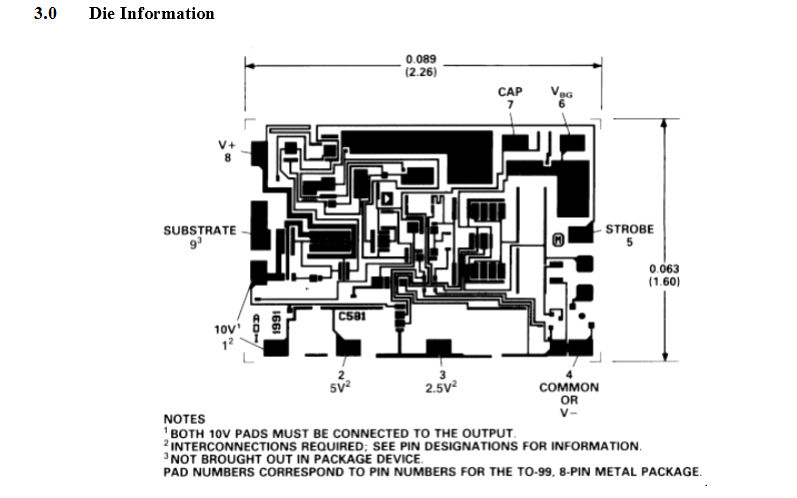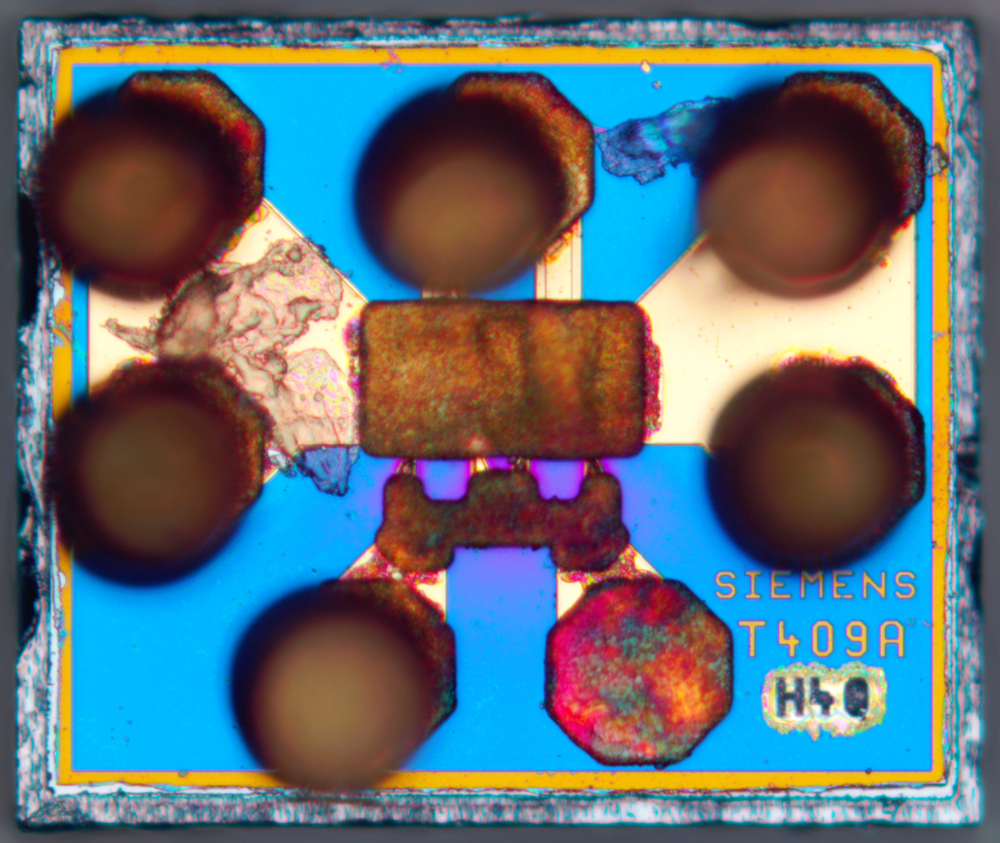April 17, 2017
LR433A - Chinese 433MHz SAW resonator : weekend die-shot
This Chinese LR433A is a SAW resonator at 433MHz. Heart of numerous simplest RF transmission systems. Die is transparent - it's quartz.It was packaged this dirty (it looks more like photoresist processing defect). Die size 3681x769 µm.

Comb pitch 3.2µm (line+space). Another specimen had cute defect: only miracle left 2 terminals not shorted:
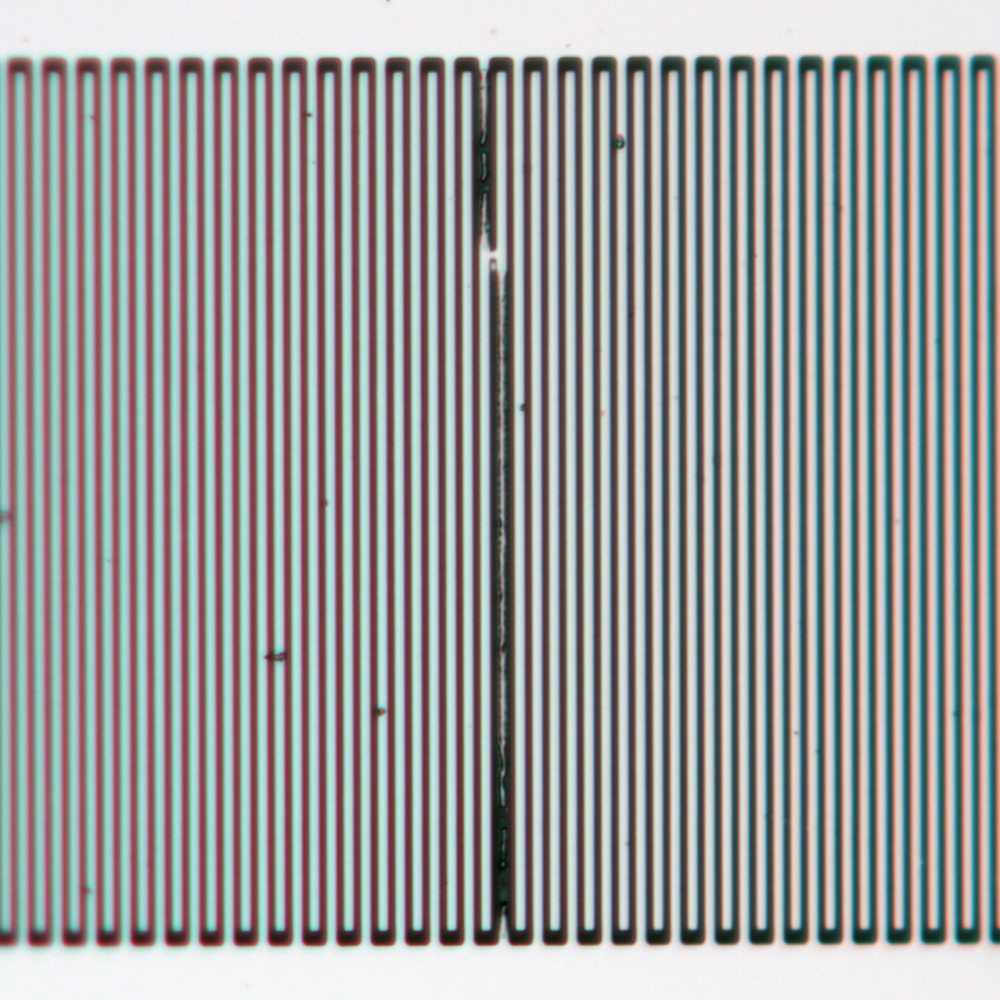
March 14, 2017
February 28, 2017
A look inside Russian 28nm MIPS CPU - Baikal-T1
Many of you might have heard about Baikal-T1 - Russian implementation of dual core Imagination Technologies MIPS P5600 32 r5 with on-board 10Gb Ethernet. Baikal was the first to implement P5600 core in silicon.CPUs itself (had to go through 4 pieces to get a good die):

Read more →
February 19, 2017
Fake Hitachi HA17555 : weekend die-shot
This fake 555 is marked as Hitachi HA17555.Die size 747x762 µm.
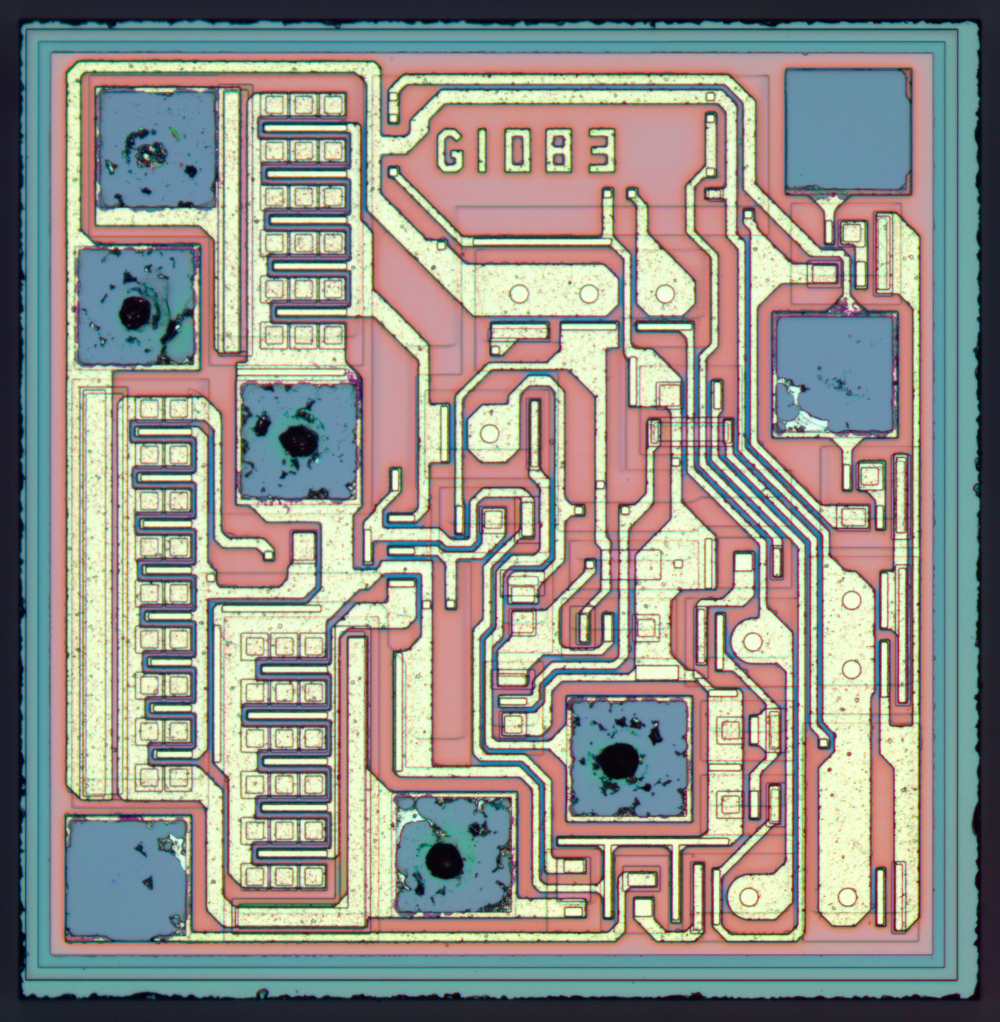
For some reason different die sample had significantly different color:
Read more →
February 16, 2017
National LM394CH - super matched BJT : weekend die-shot
National LM394CH - has 2x50 interleaved BJT transistors in parallel in order to get 2 transistors with well-matched parameters. This is often desired in discrete op-amps. Not sure why this trick is rarely used in integrated opamps.Die size 1449x1347 µm.
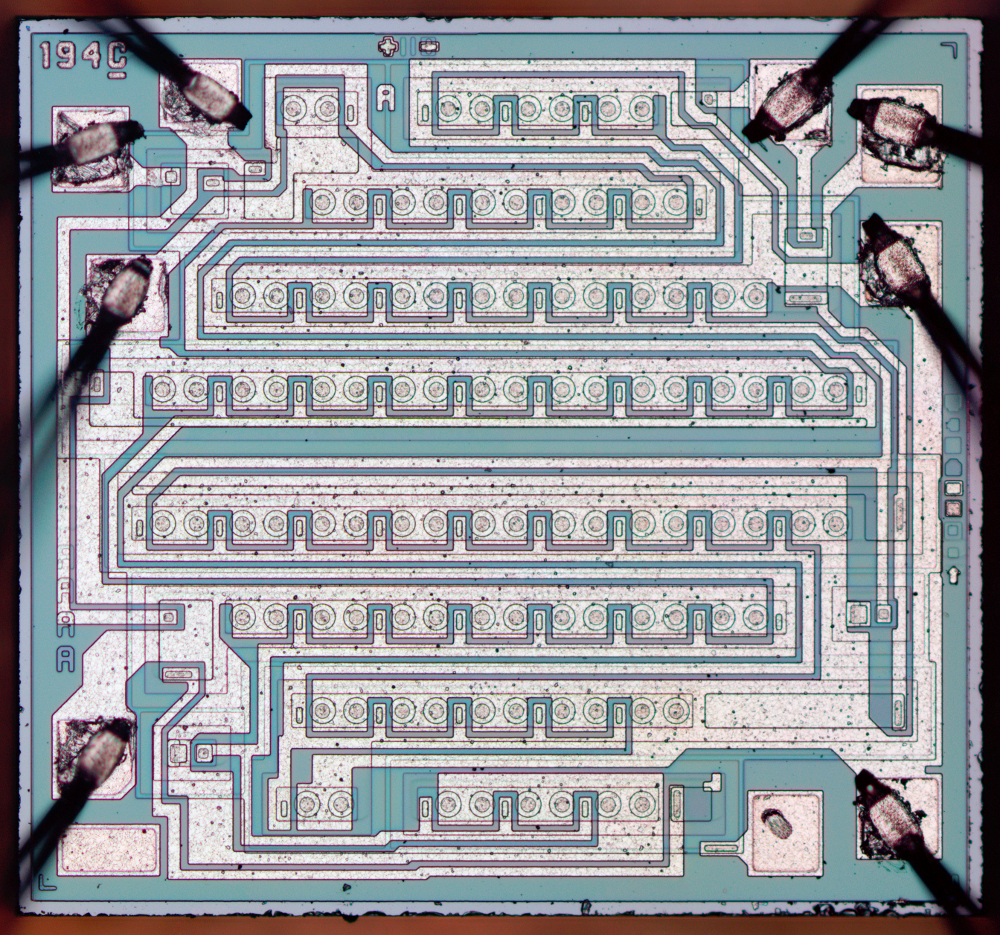
Chip is soldered to ceramic substrate holder:

February 5, 2017
Espressif ESP32 - integrated Wi-Fi transceiver: weekend die-shot
Espressif ESP32 sets the new level for widely available WiFi/Bluetooth transceivers. Now with 2x LX108 CPU core and 520kB RAM. Surprisingly - includes integrated hall sensor. Manufactured on TSMC 40nm ULP technology. Huge upgrade over their previous highly successful ESP8266.Hopefully next time we'll see their take on 5.8GHz ISM band.
Die size 2960x2850 µm (~double the area of ESP8266).
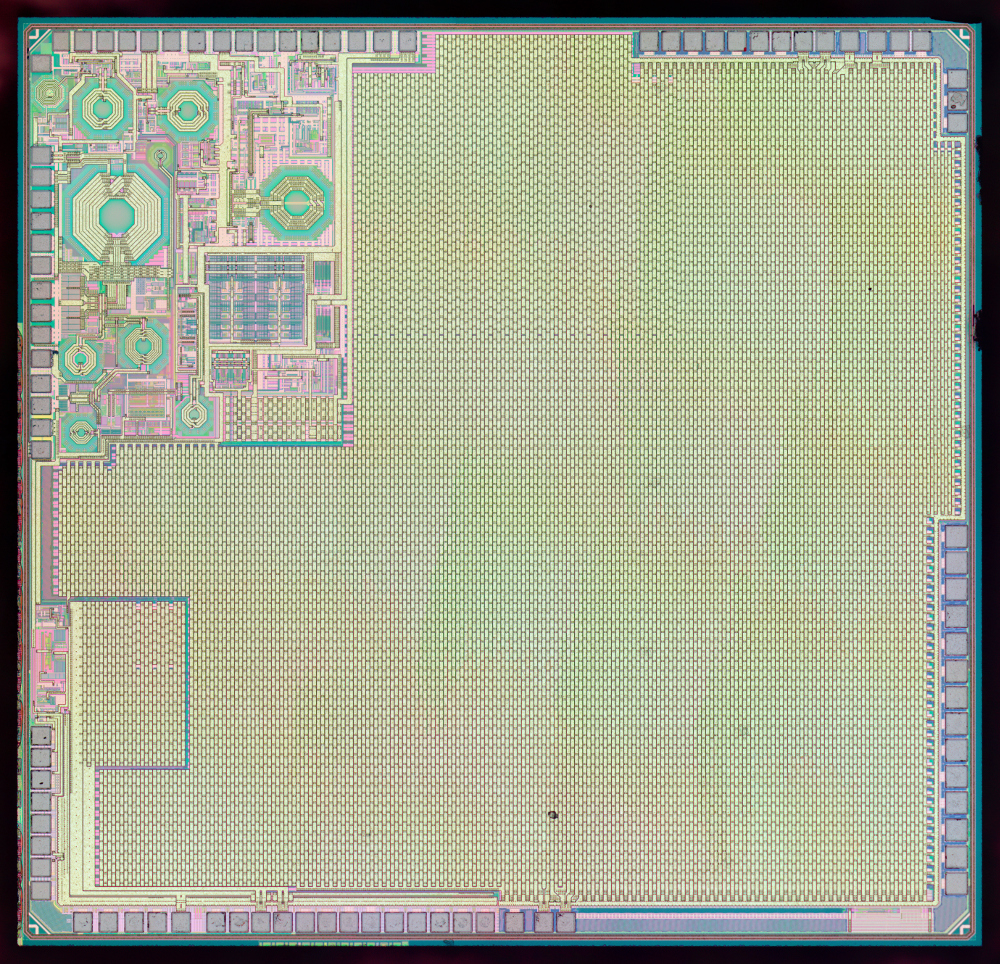
Closer look at RF part - some parts resemble ESP8266:
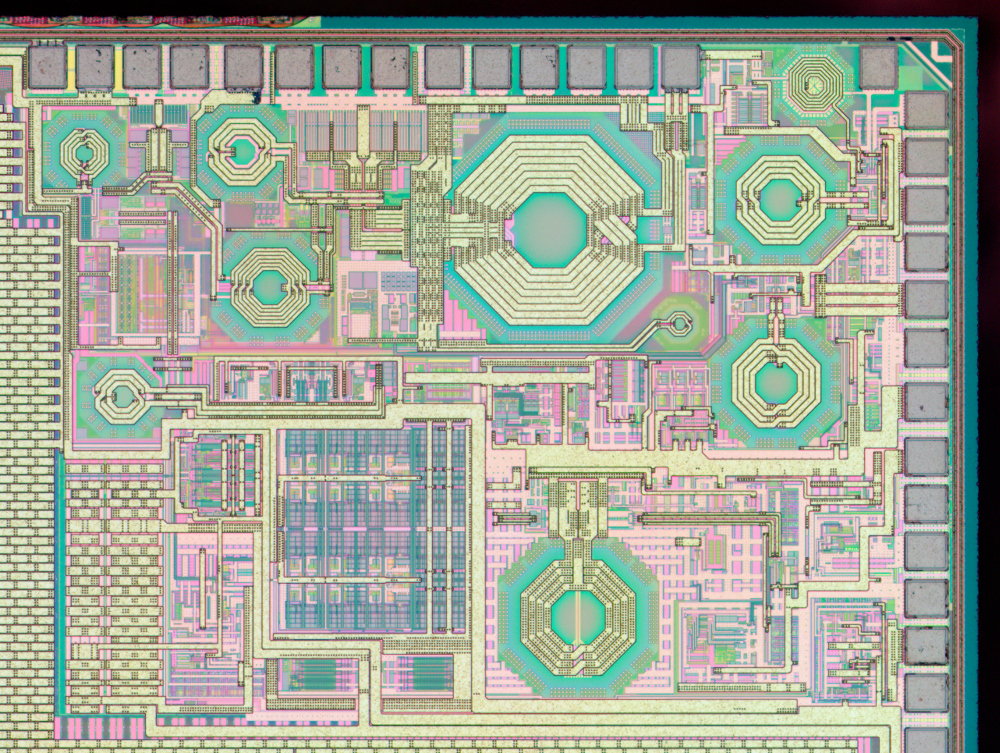
Thanks for the chips and modules to Espressif .
January 27, 2017
Analog Devices AD584 - precision voltage reference : weekend die-shot
Analog Devices AD584 is a voltage reference with 4 outputs : 2.5, 5, 7.5 and 10V. Tempco is laser trimmed to <15ppm/°C and voltage error to ~0.1%.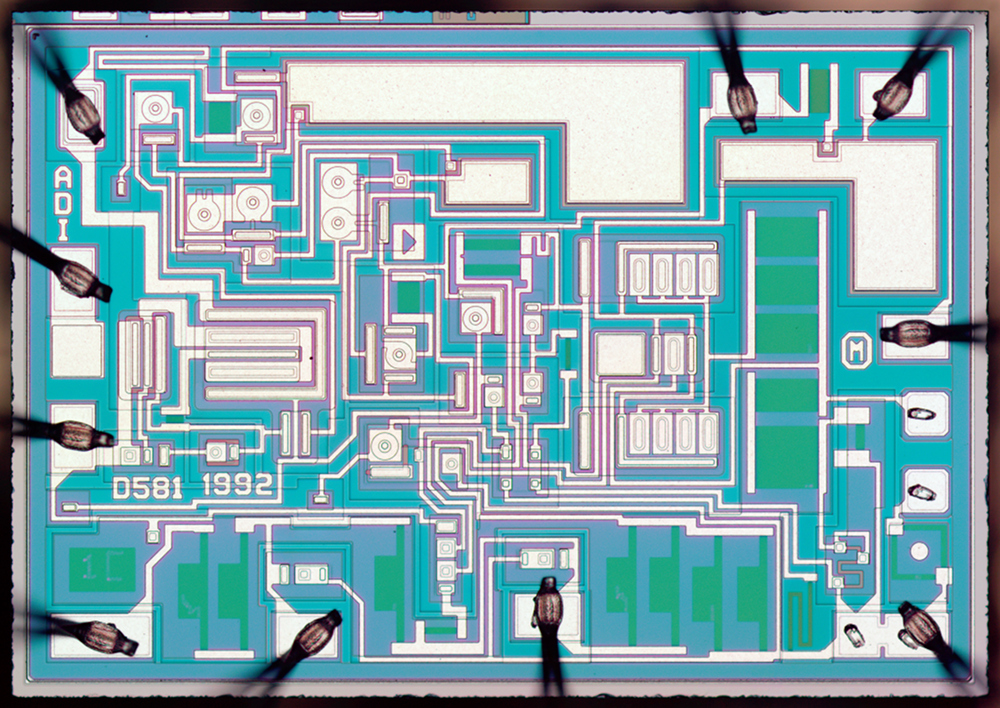
Die size 2236x1570 µm.
One can refer to a die photo from AD datasheet showing a bit older design of the same chip:
